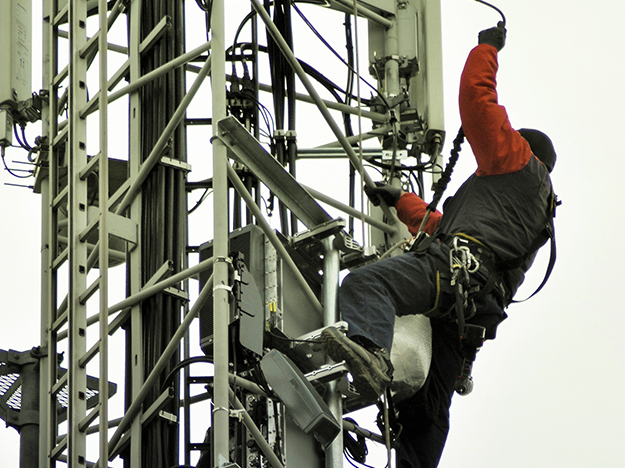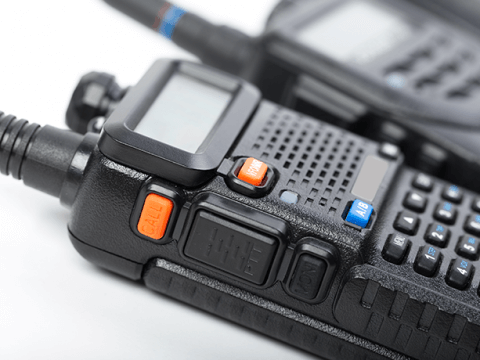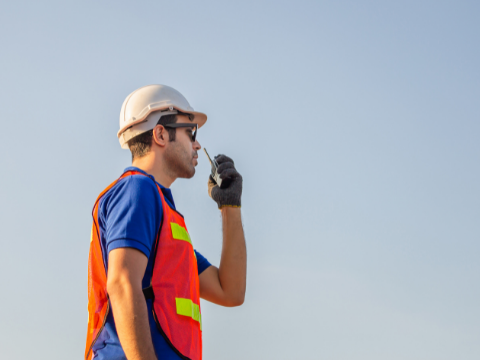How Do Two Way Radios Work?
Two way radios are a type of radio system that allows communication between two or more users over a distance. In this article we will explain how they work and highlight some of their key features.
Radio communications are more than walkie talkies
Two way radio communications can be categorised into two types: analogue and digital. Analogue radio communications use an analogue signal, which is a representation of the original sound wave. The signal is transmitted by changing its amplitude (loudness) and frequency (pitch). This method works by converting audio information into an electrical signal that can then be modulated for transmission over the airwaves. The receiver converts this electrical signal back into audible sound waves so you can hear your friend’s voice over your two way radio!
What are two way radios?
Two way radios are devices that allow you to communicate with someone else via radio transmission. They can be used in a variety of situations, including emergency situations in educational settings, factories and several other workplaces. Two way radios are also portable, so they can be used in the home or office as well as in public places like restaurants and theatres.
The half duplex system
The first type of radio can be termed a 'half duplex system'. This system can only send or receive at any given time and cannot do both at the same time. This is because of its design: the radio transmits and receives on two different frequencies, so it's not possible for it to transmit and receive simultaneously. Therefore, when you're speaking into your radio, other people won't be able to hear what you're saying until you stop speaking and release the microphone button. When they speak back to their radios after this point in time (assuming they were listening), what they say will be broadcasted over their own channels but not yours—and vice versa.
The reason why this type of system is called "half duplex" is because it uses two channels, instead of one channel like full-duplex systems do, in order to accomplish its goal of only allowing signals into one direction at once. The way this works is that when you're receiving information, you're also sending out signals to other people on your channel that let them know what channel they should be using to talk to you. This means that if someone else is transmitting, you can't receive any information from them—you'll just hear static or silence instead of whatever message they might have been trying to tell you.
The problem with this approach is that all transmissions are sent over a single antennae, so if someone else was talking on your frequency while another person was trying to talk on theirs (or vice versa), then neither one would be able to communicate effectively! That's why two-way radios usually use "frequency hopping" technology: it allows multiple channels for different groups of users so there aren't any problems with signal overlap or interference between groups' conversations.
Why do two way radios have an antenna?
As two way radios have an antenna attached to them, they transmit signals on the exact frequency they receive on. The antenna is a device that transmits and receives radio waves. The antenna is the part of the radio that picks up signals from the air, which it does by using electromagnetic waves.
Transmitters are used to send signals through air or space (such as with satellites), while receivers are used to receive those same signals. The two way radio antenna will pick up these electromagnetic waves and convert them into information that will be heard on your speaker or earpiece.
Channels and frequency
A channel is the frequency band used by your radio to send and receive transmissions. A channel can be split into sub-channels, each of which carries a specific call sign and an assigned purpose. For example, if you're using a two way radio as part of an emergency response team, one of your channels might be designated for chatter among all members of the team; another would be designated for communications with dispatchers or other outside parties; still another may be used for tactical operations such as coordinating search-and-rescue efforts or managing traffic flow in response to an accident on a roadway.
Your radios will have certain channels programmed in so that they operate on the right frequency.
-
Each channel is a different frequency, with different ones being reserved for specific purposes, such as public safety or military use.
-
Every radio set can work as both a receiver (for incoming signals) and a transmitter (for outgoing signals). The function of the receiver is to detect and amplify the electromagnetic wave radiation from an antenna, which is then fed to other components in the radio set. The transmitter receives an electrical signal from its own amplifier, modulates it onto an RF carrier waveform, and then radiates this modulated RF wave.
Two way radios communicate via radio frequency
To understand how two way radios work, it's important to know that radio frequency is a type of electromagnetic wave. Electromagnetic waves are forms of energy that transmit information (such as sound and pictures) from one place to another.
Radio frequency is used for communicating information over long distances. Two way radios use radio frequency to communicate with other people who are using two way radios, even when they're out of sight and hearing range from each other.
Two way radios are either analogue or digital
Analogue radios typically have a limited number of channels and are cheaper, but they don't offer the same data sharing capabilities as digital radios. Digital radios are more expensive and require more complex equipment, but they provide more options in terms of sound quality, reliability, security and encryption.
Digital two way radios allow data sharing
Digital two way radios also allow data sharing. This is one of the reasons they are popular in businesses, especially those that deal with sensitive information, such as telecommunications or security companies. They can be encrypted to ensure privacy, and they offer a number of ways to share data, including sending email messages and creating group conversations. Digital two way radios can also be encrypted.
In Summary
Two way radios are an excellent tool for communicating with a team. You can use them in different situations such as construction sites, sports fields and even during emergencies. They are also an effective way to communicate when there is no mobile phone service available. For more information on a new or upgraded system, contact one of our experts today, or why not check out our Manufacturers & Partners.



